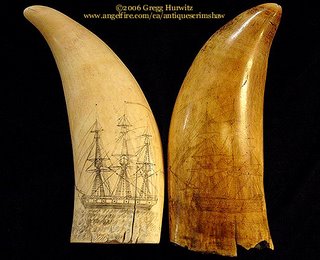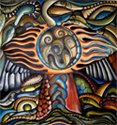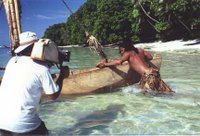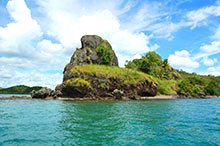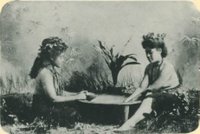
From Wendy,
I collected this story from Jovilisi from Sueni village. It is a story of Toatagane's daughters and their adventures and travels in Macuata as told by Jo using the English language.
Toatagane was one of the chiefs or our place in our old ancestral village of Nabatini. He had two daughters, Adi Senibua who was younger, and Adi Wata who was older. They were cooking their breakfast one morning consisting of yams. The method of cooking was preserving the liquid in the pot which was a clay pot. Their father returned from planting in the garden and the food was ready. The table was prepared for breakfast with nicely cooked yam. But they had made a mistake. They had poured away the juice from the pot which was earthenware. It was usual to eat the cooked yam with the liquid. 'What have you done with the juice?' shouted Toatagane. He was furious, sad, and angry.
So he told his daughters to pack straight away, to take their belongings and go to a faraway place where his name was not know. They were downhearted and started to cry to be banished like that. They travelled down the track towards the sea because their village is on top of the mountains in Vanua Levu.
The first place where they rested was near a river with big stones, big rocks piled together. They started to wonder how that came about and one said to the other, the young one. 'Just look at the big rock all piled together'. In our dialect the older one replied, 'They are just sitting on top of each other.' From then till today that placed is called
Vatuveitikoni which means rocks on top of one another.
Further down it started to rain. The girls were getting wet and cold and they came to a deserted house, probably deserted during the war. In the kitchen they saw a burning fire so then took two sticks of fire with them and travelled further on. The older one was holding them, blowing them, and the younger girl was warming herself. That place is called
Nabukaraliga which means that she was holding the fire in the air and blowing them to warm the younger sister.
Then they moved on and saw an orange tree fully ripened and full of fruit. When the orange tree ripens the fruits get yellow and reddish. Adi Wata called out, 'There's a big orange tree over there.' This place is called
Vunimoli which means the orange tree.
They left that place and had to cross a small creek. They could not jump across because it was a bit swampy so the older one went and got a fallen log of a sea tree and put the log across the creek to help them cross.
Kawakawasea means the sea which was used to cross a swampy creek.
They left that place and went further down and came across another creek and there were many spots on the rocks and the younger girl was delighted at the sight before them. She wondered how this happened and they named the place
Vatuboroboro which means a spotted rock.
Then they went further down to the place that today is the town of Labasa. There was a large
sea tree. It is a very large tree grown in Fiji which usually bears fruit which is sweet when ripe but we don't usually eat them, only when we are really hungry. Most people just chew them. When the two girls reached there, there were many bats flying all over the tree eating the fruit. They named that place
Nasea, the place of the
Sea tree. This is where the town of Labasa is situated now.
They left there and went further down to a place where the village of Naseakula now stands. It was during low tide and because these girls were from the bush they were delighted to see seashells along the bank of that small creek. The younger girl was picking up the seashells on the bank, savulu. That is why the
vanua of Labasa is called
Wasavulu by its chiefly title until today. She stayed there and her sister went further on.
The place she came to is what is called today Tuatua. She sat down to wait for her younger sister and she was calling on top of her voice but the younger one answered back to Wata. 'I'm not going any further. You can go. I am staying. Go on' So the younger one 3was left there, Adi Senibua, and she became the chief of that place because she was good-looking, beautiful and now I heard about this very old story that she became the
vu of that place which is called Madraibokola.
The elder girl Wata went further down to where the Wailevu village is situated. She was keen to see this wide river and she had to cross it so she swam across. She called this place
Wailevu which means a very big river.
Further down she was getting cold and she came across a small river just two to three kilometres down from Wailevu and she was saying 'I have to swim across'. Qalo means swim and we call this place
Qalowaqa which means a place to swim.
Then she left that place and went further down and then came across a village. The people were having lunch there, a pudding made out of tapioca and coconut cream. She came in from the bush not knowing this food. There was no tapioca from her home village. She liked the taste of the pudding and when she finished the first plate the ladies said, 'Have some more pudding'
Me tavi na yabia? This referred toa the second serve of the pudding by calling the place
Tabia.Then she came upon a hill and on top of the hill looking down at the sea thre was a village down below. But there was an army of villagers just fighting there, burning down villages and when they saw this woman descending from the hill they thought that she was a spy. They tried to catch her and were yelling on top of their voices. 'Catch her.
Yalava. Catch from there.
Yalava is the place. Chase her from there.'
She left there and came further down and when she came down to the second village which is Korotubu and there were some people there. They were occupied and they threw stones and rocks at her.
Tubua mai ina. That place is called
Korotubu.She left there and it was getting dark and she was getting tired also and needed a place to sleep on the way. There were a lot of coconuts and a big
dilo tree on the beach. She brought two coconut leaves, the dried leaves called
Sasa and spread them around. Sasa is the dried coconut leaf. That place is called
Sasa.She left Sasa and went further down to where the village of Naduri stands today. That army of warriors that were fighting along the coast had destroyed the village, burnt it down. Only the posts were left, all burning. She was unhappy because nobody was there. It was empty. 'All the place is burnt down. Only the posts are standing up' she thought.
Naduri means burnt posts. So she was there alone and made up her mind not to go further but to find a place to stay for the time being. So she looked down towards the west and saw there was an island. She thought it might be safe if she went there.
So she turned herself into a bat and flew across to the island which we called today
Macuata i wai. Nowadays in Naduri there are still people by the name of Tamaibeka, still using that word, (not nabeqa) some of the chiefs of Naduri. And she went and there was a
wiriwiri tree. Boys came to the wiriwiri tree and saw this bat hanging up there and started to collect stones to throw at the bat. But she spoke to them. 'I'm not a bat. I'm not a flying fox. I'm a human being'. So she changed into a person and came down. They saw that she was a beautiful girl and took her home and then made her chief of Macuata i wai. She was staying there with the people feeling very safe and the people were very kind.

And one day when she was collecting seashells from the beach, her father, Toatagane back at Batini on top of the mountain was very lonely and he looked down. He saw her picking up the shells and in our dialect language he said, 'Ma
cu o Wata ni vili mena vivili' which means Wata is picking up seashells. That is where the name
Macuata derives from and from that time until now these two places where the young ladies stayed most of the time, they still have a very strong link with our place.
Up to the time when they signed the Deed of Cession there were two chiefs of Macuata who signed the Deed of Cession, one from Naduri and one from Nasekula. Katonivere from Naduri and Ritova from Naseakula, one from the older sister from Naduri, and the younger sister from Nasekula.
Jo said, This story was told by my grandfather to Ratu Sukuna in 1928 to the Native Lands Commission. This is written down. It is in the Native Lands Commission files.
Peceli said, Maybe it is in the category of
ai tukutuku raraba. There are stories told, this is one of them.
Jo said, My grandfather's name is Tomasi Naceba. Ratu Sukuna was in Macuata. They held the first Native Land Commission in 1928 in Naduri. Ratu Sukuna was Commissioner of Lands. The people of Macuata could not make a history of about they originated from. There were too many stories and Ratu Sukuna could not be convinced so my grandfather came. A message was sent to my grandfather through the Tui Labasa of that time because the Tui Labasa is related to the people of the time. Their mother comes from Vuo which is bati to Labasa and he knew that their people though were not from Macuata but their mother's were. My grandfather went down to Naduri and told the story to Ratu Sukuna and this story convinced him that this was the real thing that had happened. He had been hearing this and that and couldn't believe it. After hearing this story Ratu Sukuna told the chiefs of Macuata ' I think you of the
vanua of Macuata should by right owe their allegiance to Batini, the place they originated from.























